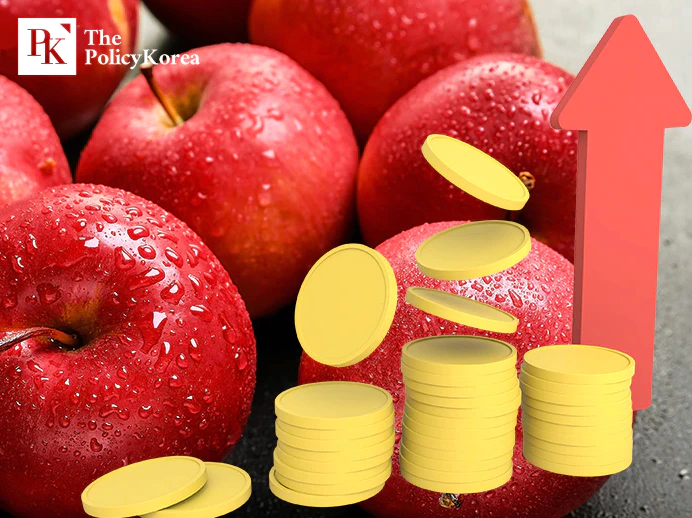[동아시아포럼] EU 탄소관세, WTO 무역 원칙 훼손 우려
지난 6월, EU 탄소국경조정제도(CBAM) 발효 탄소시장 미비한 개도국, 동등한 대우 어려워 자유무역협정, WTO 무역 원칙 등 위배 논란
[동아시아포럼]은 EAST ASIA FORUM에서 전하는 동아시아 정책 동향을 담았습니다. EAST ASIA FORUM은 오스트레일리아 국립대학교(Australia National University) 크로퍼드 공공정책대학(Crawford School of Public Policy) 산하의 공공정책과 관련된 정치, 경제, 비즈니스, 법률, 안보, 국제관계에 대한 연구·분석 플랫폼입니다.
지난 5월 16일 EU집행위원회가 탄소국경조정제도(Carbon Border Adjustment Mechanism, CBAM)를 발효했다. CBAM은 유럽연합(EU) 역외국에서 생산된 제품을 EU 역내로 수입할 때 제품 생산과정에서 나오는 탄소배출량을 추정해 관세를 부과하는 제도로, 2단계에 걸쳐 시행될 예정이다.

올해 10월부터 철강·알루미늄 등 6개 품목에 적용
1단계는 오는 10월 1일부터 2025년 12월 말까지 준비기간으로 탄소 관세를 부과하는 대신 수입업자에 대해 탄소배출량 보고 의무만 부여하고 이후 2026년 1월 1일부터는 2단계를 전면 시행할 계획이다. 적용대상은 철강, 알루미늄, 비료, 전기, 시멘트, 수소제품 등 6개 품목으로, EU 배출권거래제(Emissions Trading System, ETS)와 연동됐거나 이와 유사한 수준의 탄소가격제도를 적용하는 국가에서 수입하는 제품에 대해서는 적용하지 않는다. EU는 CBAM이 탄소 저감을 촉진하는 동시에 탄소 누출(carbon leakage)을 방지하는 효과가 있을 것으로 기대하고 있다. 탄소 누출은 탄소 배출 규제로 인해 생산비용이 늘어나 역내 기업들이 규제가 약한 해외로 생산기지를 옮기는 현상을 말한다.
하지만 EU의 기대와 달리 CBAM이 국제 무역의 원칙을 훼손할 가능성이 있다는 지적이 제기되고 있다. CBAM의 설계와 실행 방식을 자세히 들여다보면 EU는 물론 다자간 기후·자유무역협정에 배치된다는 것을 알 수 있다. 이에 대한 개정이 이뤄지지 않을 경우 CBAM은 효과적인 기후 대응 수단이 되기보다는 배타적인 무역 정책으로 전락할 가능성이 높다.
아울러 개발도상국과 최빈국들은 자국 내 탄소 시장이 조성되지 않은 데다 제품 생산과정에서 발생하는 탄소 배출량에 대한 회계나 보고체계 또한 갖추지 못했기 때문에 부담 분담의 원칙 하에 CBAM이 차등 적용돼야 한다. 하지만 파리협정이 정한 ‘공정한 감축 부담 분담의 원칙(Fair Burden-Sharing Principle)’과 달리 CBAM은 개발도상국과 최빈국들에게 어떤 우대나 면제 혜택도 제공하지 않는다. 이같이 불공정한 구조 속에서는 EU가 수입 관세를 통해 얻은 수익은 개발도상국이나 최빈국들의 역량 강화를 지원하는 데 쓰이는 대신 EU의 예산으로 편입될 가능성이 높다.
파리협정과의 일관성을 강조해 온 EU 자유무역협정의 측면에서 보더라도 CBAM은 배치되는 점이 많다. 최근 EU의 자유무역협정에서는 무역을 비롯해 지속가능한 발전과 관련해 파리협정의 협약들을 구체적으로 언급해 왔다. 특히 지난해 6월 체결된 EU-뉴질랜드 간 자유무역협정은 파리협정의 목표와 원칙을 위반한 행위에 대해 무역 제재를 적용하도록 규정하고 있다.
최혜국 대우·내국인 대우 등 WTO 비차별 원칙에 배치
CBAM은 다자간 무역규범과도 명백히 모순되는 점이 있다. 특히 세계무역기구(WTO)의 비차별 원칙(Non-Discrimination Principles)인 ‘최혜국 대우 원칙’과 ‘내국민 대우 원칙’이 CBAM의 시행으로 인해 혼선을 빚을 가능성이 있다. 최혜국 대우 원칙은 여러 국가로부터 유사한 제품을 수입할 때 특정 국가에 대해 특혜를 부여한다면 다른 국가에도 그와 동등한 대우를 해야함을 규정하고 있으며, 내국민 대우 원칙은 역내에서 생산한 제품과 수입 제품 간에 차별이 없어야 한다고 명시하고 있다.
반면 CBAM은 유사한 제품에 차별적인 관세를 부과하는 근거로 생산과정에서의 탄소 배출량의 차이를 반영하는 만큼, 이는 앞서 언급한 WTO의 최혜국 대우의 원칙에 위배될 소지가 있다. 국가마다 생산방식과 공정이 달라 유사한 제품이라고 하더라도 그 과정에서 발생한 탄소 배출량에는 차이가 있을 수 있기 때문이다.
또한 CBAM에 역내 생산 제품과 수입품 간에 동등한 대우를 규정한 내국민 대우의 원칙을 적용하는 것은 EU 제품에 적용된 ETS를 다른 수입국으로 확장해야 함을 의미한다. 하지만 현재 전 세계 온실가스 배출량의 23%를 차지하는 73개국에만 국가 혹은 지역 차원의 탄소가격제가 마련돼 있다는 점을 고려할 때 CBAM이 서로 다른 기후 규제 시스템을 가진 국가들의 동등성을 어떻게 보장할 것인지에 대해서도 검토할 필요가 있다.
CBAM, 탄소 누출 개선 효과 있는지 입증하기 어려워
관세와 무역에 관한 일반협정(General Agreement on Tariffs and Trade, GATT) 제20조에 따라 예외 사항을 넓게 해석한다 하더라도 EU는 CBAM이 WTO의 비차별 원칙을 가장한 또 다른 규제가 아님을 입증해야 한다.
하지만 CBAM의 복잡한 적용방식은 또 다른 불공정의 요인이 될 수 있다. EU는 CBAM을 적용하기 위해 각 부품과 구성요소의 원산지에서 발생한 탄소 배출량까지 파악해야 하는데 이 과정에서 국가 간 보복관세가 발생한 우려가 있기 때문이다. 이러한 우려를 해소하기 위해서는 탄소 배출량과 원산지에 대한 세부 규정을 마련해야 하나, 이는 여러 국가가 연결된 복잡한 글로벌 밸류체인에서 개발도상국과 최빈국 정부의 행정력을 초월하는 어려운 과제가 될 것으로 보인다.
CBAM이 탄소 누출에 있어 실제 효과가 있는지 입증하기 어렵다는 사실도 문제점도 지목된다. 실제로 현재까지의 경험과 연구결과만으로는 그 효과를 입증하기 어려운 상태다. 기업들이 투자를 결정함에 있어 탄소배출량이나 관세보다는 노동비용 등 생산요소, 공정하고 투명한 규제, 안정적인 정책 환경, 재산권 등의 요인들을 우선적으로 고려할 가능성이 크기 때문이다.
인도-EU 간 무역·기술위원회(Trade and Technology Council, TTC)에는 이미 CBAM 관련 조항이 포함돼 있는 만큼 인도 정부는 앞서 언급한 사항에 대해 EU에 보완 조치를 요구할 필요가 있다. 이를 통해 개발도상국와 최빈국들이 다자간 기후·무역협약으로 확보한 공정성이 CBAM에 의해 훼손되는 일이 없도록 조처해야 한다.
EU carbon tariffs are bad trade policy
The regulations establishing the EU’s carbon border adjustment mechanism (CBAM) entered into force on 16 May 2023. The CBAM, which imposes a price on the carbon emitted directly and indirectly during the production of carbon-intensive goods entering the EU, will be implemented in two phases.

The transitional phase beginning 1 October 2023 will cover carbon-intensive imports in six sectors — aluminium, cement, electricity, fertilisers, iron and steel and hydrogen — imposing only reporting requirements on importers. The CBAM charge will be effective from 1 January 2026 and will apply to imports from all countries except those linked to the EU Emissions Trading System (ETS) or with an equivalent carbon pricing mechanism.
The CBAM is expected to encourage decarbonisation at the global level while also preventing ‘carbon leakage’. But a careful review of the CBAM’s design and proposed implementation reveals inherent inconsistencies and contradictions with multilateral climate and trade agreements, as well as with the EU’s free trade agreements. If not suitably amended, the CBAM may end up being implemented more as an exclusionary trade policy tool than as an effective climate action tool.
In a deviation from the burden-sharing principle under the Paris Agreement, the CBAM makes no distinction and offers no concessions or exemptions to developing countries and least developed countries (LDCs). Given the lower institutional capabilities of developing countries and LDCs to set up domestic carbon markets or a comprehensive accounting and reporting system for the carbon-emitting intensity of production processes, due differentiation in burden-sharing ought to have been incorporated into the CBAM.
The inequitable design is further reinforced by the fact that the revenue collected from CBAM charges will be directed to the EU budget instead of being utilised to lead capacity-building initiatives in developing countries or LDCs.
This departure from the Paris Agreement is even more glaring when viewed against EU’s commitments in its free trade agreements. A distinct reference to the commitments of the Paris Agreement has always been included in chapters on trade and sustainable development in recent EU free trade agreements. For the first time, the EU–New Zealand free trade agreement signed in June 2022 provides for the application of trade sanctions for breaches related to the objectives and principles of the Paris Agreement.
The CBAM is also in apparent contradiction with multilateral trade norms. The fundamental World Trade Organization (WTO) non-discrimination principles of most favoured nation status and national treatment appear obfuscated by the CBAM. While the most favoured nation principle requires that similar products should not be discriminated against if coming from different trade partners, national treatment calls for non-discrimination among domestically produced goods and ‘like’ imported goods.
The EU justification for differential treatment of otherwise similar products is based on the differential carbon content of imports. But different process and production methods across countries can lead to varying levels of embedded carbon content in a ‘like’ good, making the CBAM a potentially discriminatory border tax and liable to challenges at the WTO.
In justifying its compliance with the principle of national treatment, the EU’s argument of parity between domestically produced and similar imported goods is based on the CBAM being an extension of the ETS that is already applied to domestic products. But as of April 2023 there are just 73 national or sub-national carbon pricing mechanisms covering only 23 per cent of global greenhouse gas emissions. It is hard to imagine how the CBAM can ensure ‘equivalence’ of imports from countries that have opted for different forms of climate regulation.
The implicit assumption of the CBAM is not just contrary to the spirit of ‘self-differentiation’, but also raises the more important question of extra-territoriality effects.
Even a broad interpretation of the general exceptions contained in Article XX of the General Agreement on Trade and Tariffs may not be sufficiently persuasive to demonstrate the CBAM’s WTO compliance. The EU will still be required to prove that the CBAM is non-discriminatory in its application and that it is not a ‘disguised restriction on international trade’.
In the broader trade context, the complexity of implementing the CBAM brings in an element of inequity. Given that there is a high likelihood of the CBAM triggering retaliatory carbon border taxes, global value chain-led trade will necessitate establishing rules of origin to account for the carbon content of every part and component at the point of origin. This will be a formidable task, particularly in complex global value chains involving multiple border crossings of parts and components, which will be beyond the administrative and institutional capabilities of many developing countries.
Most significantly, the fundamental premise of ‘carbon leakage’ is contradicted by available evidence. The broad inference drawn from extant empirical literature is that there is currently no conclusive evidence of a significant level of carbon leakage to provide a fair rationale for the CBAM. Relative to the costs of environmental protection, factors like labour costs, production factors, transparent regulation, a stable policy environment and property rights are all likely to have far greater weight in investment location decisions — even of polluting industries.
With the CBAM now included in planned discussions by the India–EU Trade and Technology Council, it is time for India to seek corrective action from the EU to ensure that the scarce diplomatic capital of developing countries and LDCs that has been spent on ensuring fair outcomes of multilateral climate and trade negotiations is not rendered wasteful by the CBAM.
원문의 저자는 아미타 바트라(Amita Batra) 자와할랄 네루 대학교(Jawaharlal Nehru University) 국제학부 교수입니다.




























